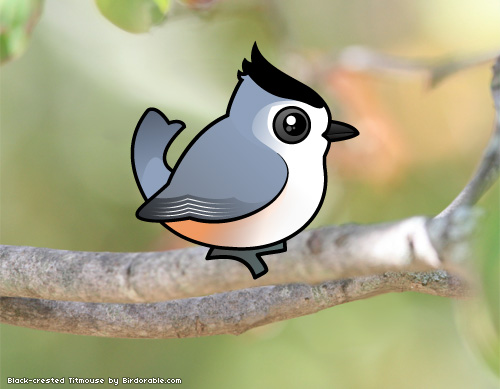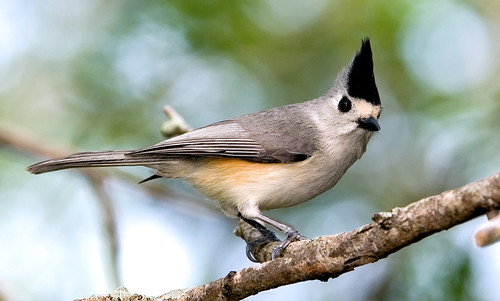Fun Facts: Black-crested Titmouse

1. The Black-crested Titmouse is closely related to the Tufted Titmouse. They hybridize where their ranges overlap (in Central Texas) and they used to be considered the same species.
2. The bird's DNA suggests that the Black-crested Titmouse diverged from the Tufted TItmouse about 250,000 years ago.
3. It's 'peter, peter, peter' call is similar to that of the Tufted Titmouse, but shorter.
4. Their diet consists of seeds, berries, nuts, insects and insect eggs.
5. The crest of a female Black-crested Titmouse is actually dark gray.
6. Another name for the Black-crested Titmouse is the Mexican Titmouse.
7. Black-crested Titmice are considered residents throughout their range, which covers much of central Texas, and parts of Oklahoma and Mexico. They do not migrate.
8. Black-crested Titmice are cavity nesters, and have been known to line their nests with horse hair, feathers, onion skins, and even tissue paper.
9. The Black-crested Titmouse is one of our cute Birdorable birds! The Black-crested Titmouse was added to Birdorable on November 10th, 2010. Check out our other cute tits and chickadees.

Photo by martytdx (source: Flickr)





Comments
Leave a comment
Thank you!